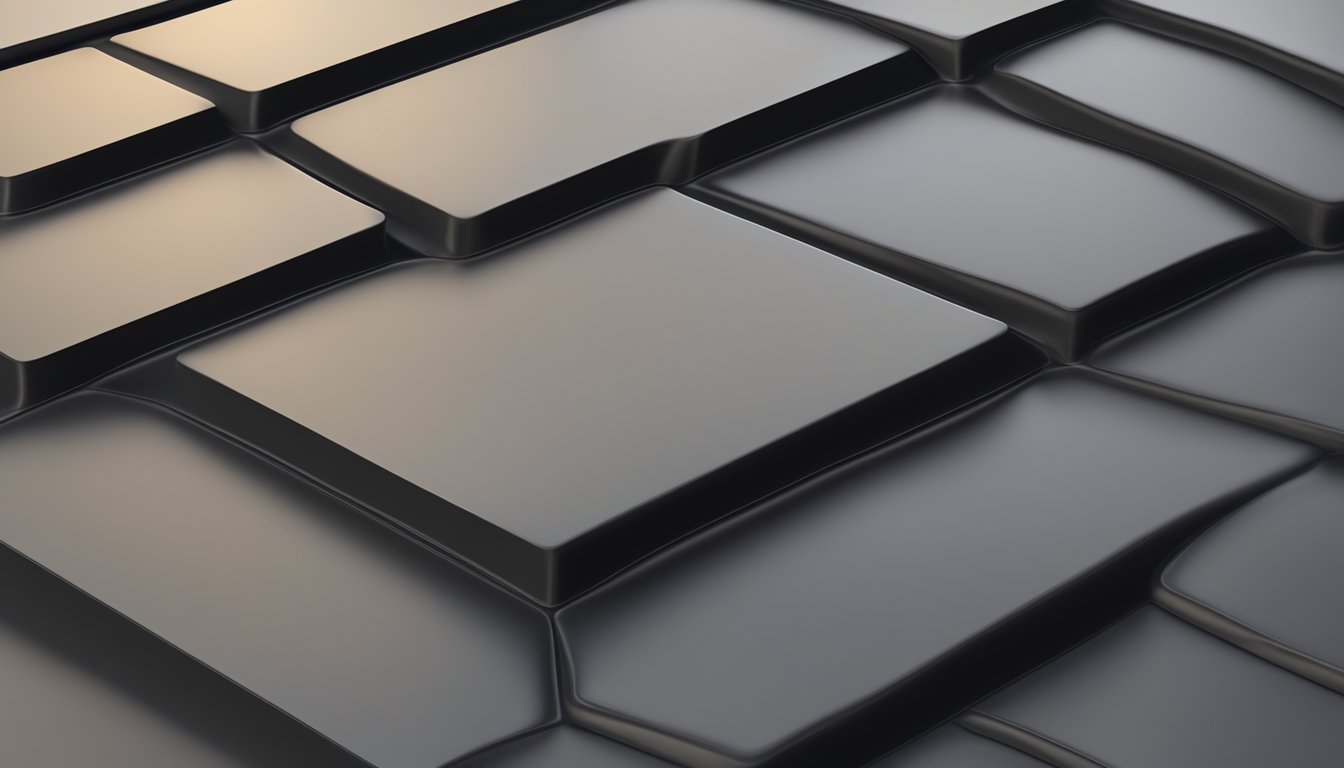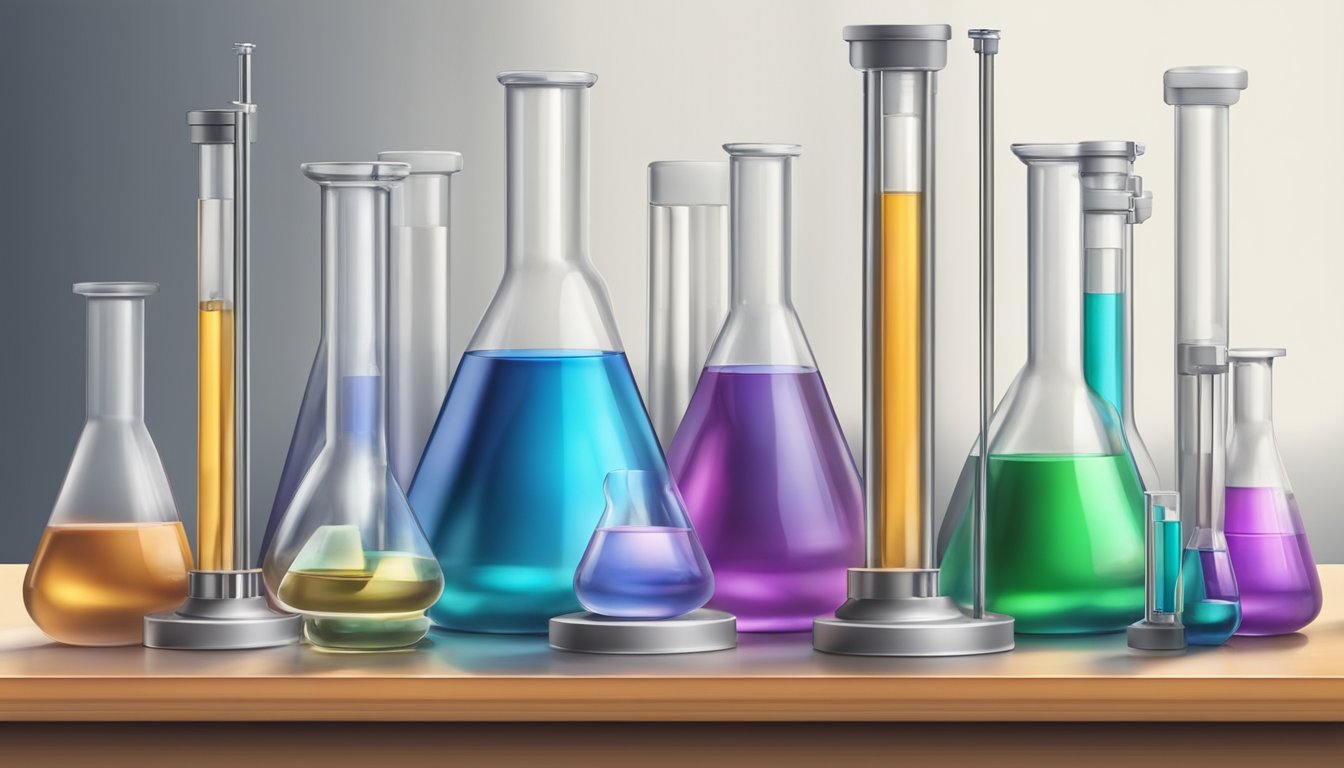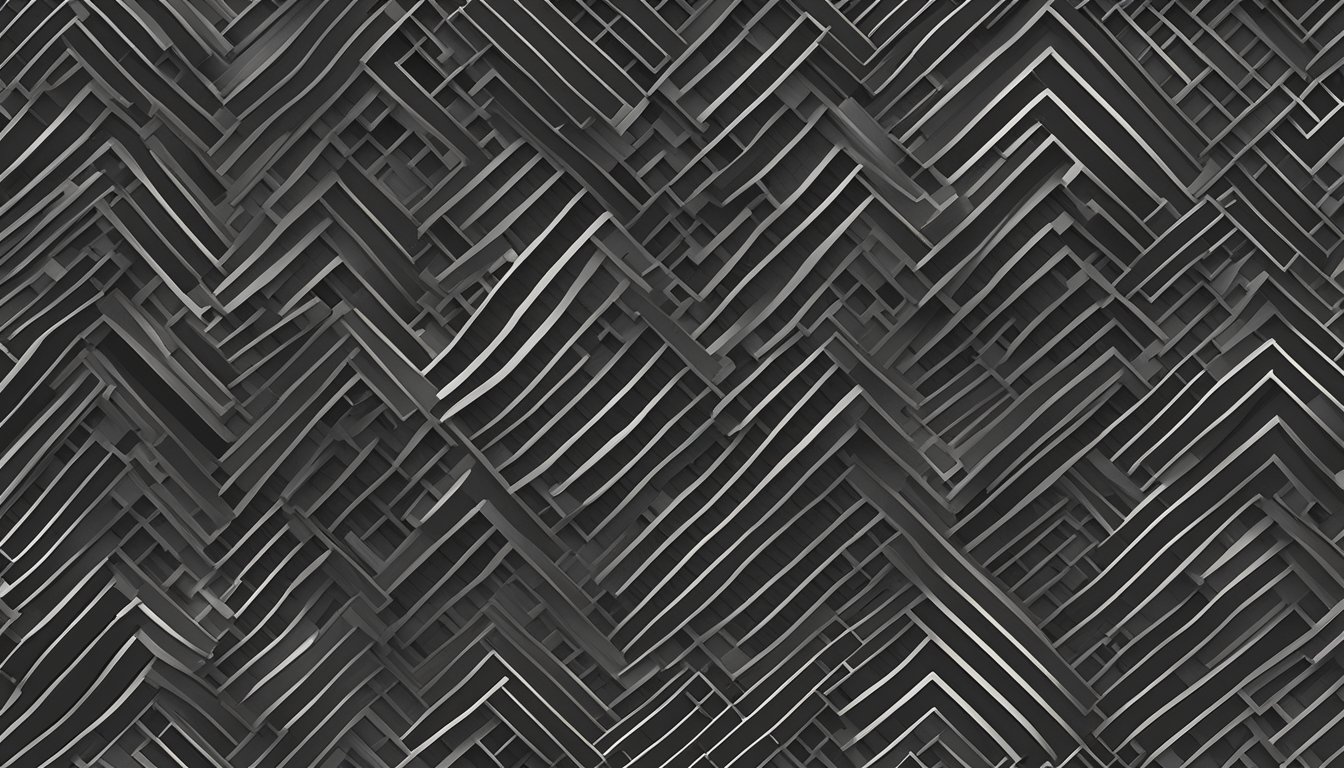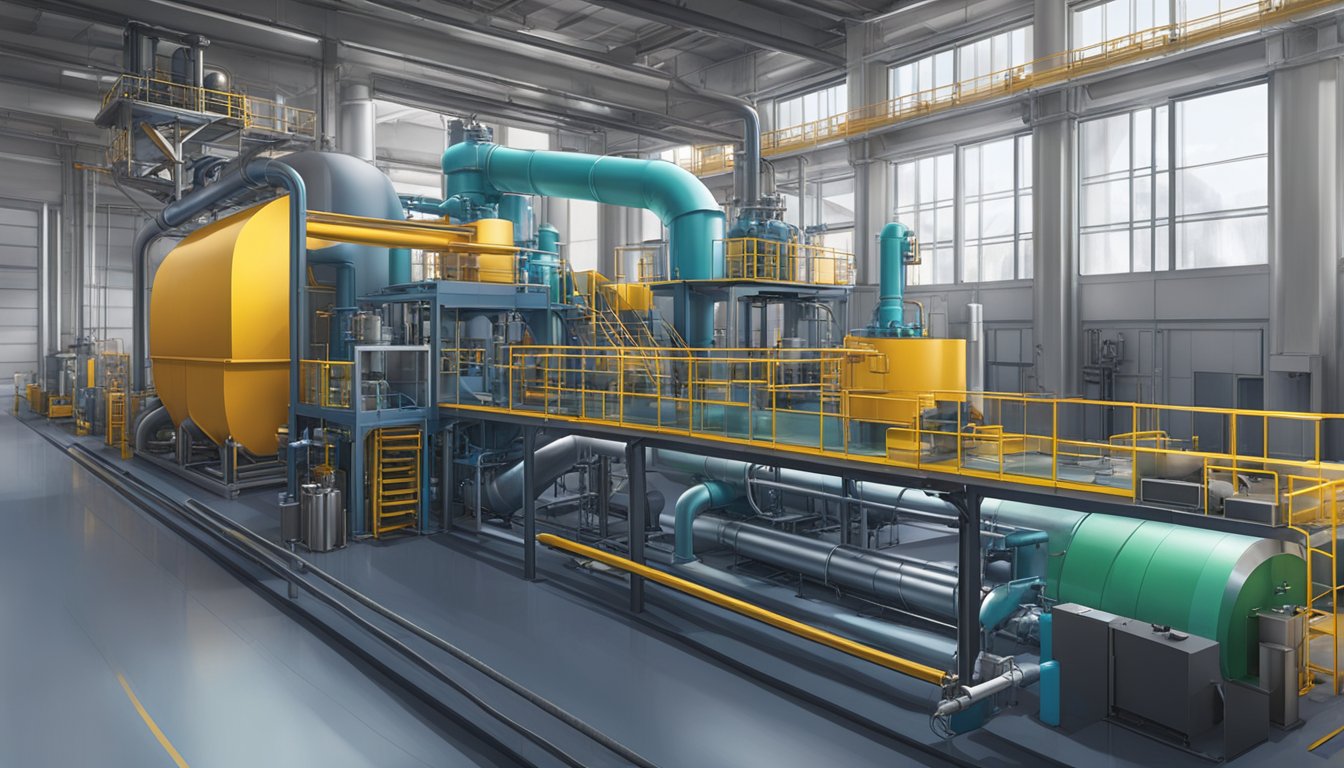Ethylene Propylene Diene Monomer (EPDM) Rubber: Properties and Applications
20/01/2024
Ethylene Propylene Diene Monomer (EPDM) rubber is a type of synthetic rubber that is widely used in various applications. It is made up of three monomers: ethylene, propylene, and diene. The diene used in the manufacture of EPDM rubber can be one of three types: ethylidene norbornene (ENB), dicyclopentadiene (DCPD), or vinyl norbornene (VNB). The percentage of these monomers used in the manufacturing process can range from 4-8% [1].

EPDM rubber has a unique molecular structure that makes it highly resistant to outdoor conditions. Its backbone has a single bond, which is chemically saturated, and this makes it an ideal choice for use in applications that are exposed to harsh weather conditions. EPDM rubber is also known for its excellent resistance to heat, ozone, and chemicals, making it a popular choice for use in automotive parts, roofing membranes, and electrical insulation [2].
Overall, EPDM rubber is a versatile material that has many applications due to its unique properties. It is a highly durable material that is resistant to weather and chemicals, making it an ideal choice for use in a wide range of industries.
Chemical Composition

Ethylene propylene diene monomer (EPDM) rubber is a synthetic elastomer made from ethylene, propylene, and a diene monomer. The diene monomer usually used in the production of EPDM is ethylidene norbornene (ENB). The ENB is added in small amounts to the polymerization reaction to create a polymer with unsaturated carbon-carbon double bonds. These double bonds allow for cross-linking of the polymer chains, which gives the material its elasticity and strength.
EPDM has a unique chemical structure that makes it resistant to heat, light, and ozone exposure. The polymer backbone is saturated, which means that all of the carbon atoms are bonded to hydrogen atoms. This saturation makes EPDM highly resistant to oxidation and degradation. Additionally, the presence of the diene monomer allows for the formation of cross-links between the polymer chains, which further increases the material’s durability and resistance to environmental factors.
Overall, the chemical composition of EPDM rubber gives it excellent properties for outdoor use. It is resistant to weathering, UV radiation, and extreme temperatures. It is also resistant to chemicals, acids, and oils. These properties make it an ideal material for use in roofing, automotive parts, and other applications where exposure to the elements is a concern.
Physical Properties

Density
EPDM rubber has a density ranging from 0.85 to 1.20 g/cm³, depending on the grade and formulation. The density of EPDM is lower than that of most other rubber materials, making it an attractive option for applications where weight is a concern.
Tensile Strength
EPDM rubber has a tensile strength ranging from 7 to 21 MPa, depending on the grade and formulation. The tensile strength of EPDM is higher than that of many other rubber materials, making it suitable for applications where high strength is required.
Elongation at Break
EPDM rubber has an elongation at break ranging from 100% to 900%, depending on the grade and formulation. The elongation at break of EPDM is higher than that of many other rubber materials, making it suitable for applications where flexibility and resilience are required.
EPDM rubber also has excellent resistance to weathering, ozone, UV radiation, and chemicals, making it suitable for outdoor and harsh environment applications. Additionally, EPDM rubber has good low-temperature properties, with elastic properties to temperatures as low as -40 °C depending on the grade and formulation [1][2].
Manufacturing Process

EPDM rubber is a synthetic elastomer produced as a copolymer of ethylene and propylene, with small amounts of a pendant diene (double bonds) in order to cross-link the material. The production of EPDM rubber typically begins with the polymerization of ethylene and propylene monomers in a reaction vessel. This process is called solution polymerization, and it’s done in the presence of a catalyst.
The manufacturing process of EPDM rubber involves several steps, including:
- Monomer Preparation: The first step in the EPDM rubber manufacturing process is to prepare the monomers. This is done by mixing ethylene, propylene, and a small amount of a diene monomer in a reactor. The diene monomer is added to provide cross-linking sites in the polymer chain.
- Polymerization: The monomers are then polymerized in a solution polymerization process. The reaction is carried out in the presence of a catalyst, which initiates the polymerization reaction. The resulting polymer is a viscous liquid.
- Recovery: The polymer is then recovered from the reactor and purified. This is done by removing any unreacted monomers, catalysts, and other impurities.
- Compounding: The purified polymer is then compounded with various additives such as carbon black, oils, fillers, and curing agents. These additives are used to improve the physical properties of the EPDM rubber, such as its strength, flexibility, and resistance to weathering.
- Vulcanization: The final step in the EPDM rubber manufacturing process is vulcanization. This process involves heating the compounded polymer to a high temperature, typically between 150°C and 200°C, in the presence of a curing agent. The curing agent causes the polymer chains to cross-link, resulting in a three-dimensional network that gives the EPDM rubber its unique properties.
Overall, the manufacturing process of EPDM rubber is complex and involves several steps. However, the resulting material is a versatile and durable synthetic rubber that is used in a wide range of applications, from roofing membranes to automotive seals and gaskets.
Applications
EPDM rubber is a versatile material that is used in a wide range of applications. Its excellent weathering resistance, low temperature flexibility, and resistance to ozone and UV light make it an ideal choice for outdoor applications. In this section, we will explore some of the most common applications of EPDM rubber.
Automotive Industry
EPDM rubber is widely used in the automotive industry for its excellent properties. It is used in the production of weatherstripping, door seals, hoses, and belts. EPDM rubber is also used in the manufacture of windshield wipers, radiator hoses, and brake system components. Its excellent resistance to heat, oil, and chemicals makes it an ideal choice for automotive applications.
Construction
EPDM rubber is a popular choice for construction applications due to its excellent weathering resistance and durability. It is used in the production of roofing membranes, waterproofing systems, and sealants. EPDM roofing membranes are widely used in commercial and industrial buildings due to their excellent resistance to UV radiation and weathering.
Weather Sealing
EPDM rubber is commonly used for weather sealing applications due to its excellent resistance to ozone, UV radiation, and weathering. It is used in the production of gaskets, seals, and weatherstripping for doors and windows. EPDM rubber is also used in the production of garden hoses, irrigation systems, and other outdoor applications.
EPDM rubber is a versatile material that is used in a wide range of applications due to its excellent properties. Whether it is used in the automotive industry, construction, or weather sealing, EPDM rubber offers excellent resistance to weathering, UV radiation, and chemicals, making it an ideal choice for outdoor applications.
Advantages and Disadvantages
Durability
EPDM rubber is known for its exceptional durability, making it a popular choice for a wide range of applications. It is resistant to UV exposure, ozone, aging, weathering, acids, and many other chemicals. This makes it ideal for use in outdoor environments where it is exposed to harsh conditions. Additionally, EPDM rubber is one of the most water-resistant rubber materials available, making it ideal for use in applications where water resistance is a critical factor.
Flexibility
EPDM rubber is also highly flexible, which allows it to conform to irregular surfaces without losing its shape or integrity. This flexibility makes EPDM rubber ideal for use in applications where it needs to be molded or shaped to fit a specific form. EPDM rubber is commonly used in the automotive industry for weatherstripping and sealing applications due to its flexibility and ability to conform to the contours of a vehicle.
Cost-Effectiveness
EPDM rubber is a cost-effective material that offers a range of advantages over other rubber materials. It is relatively easy to produce, which makes it more affordable than other types of rubber. Additionally, EPDM rubber has a long lifespan, which means it can provide long-term cost savings by reducing the need for frequent replacements.
Temperature Resistance
EPDM rubber is capable of withstanding a wide range of temperatures, making it suitable for use in both high and low-temperature applications. It can withstand temperatures ranging from -58°F (-50°C) to 300°F (149°C) without losing its shape or properties. This makes it ideal for use in applications where temperature fluctuations are common.
Despite its many advantages, EPDM rubber does have some disadvantages. For example, it has poor resistance to oils and fuels and can have poor adhesion to certain substrates and reinforcements [1]. However, these limitations can be addressed by using EPDM rubber in combination with other materials or by using specialized formulations of EPDM rubber that have been designed to address these issues. Overall, EPDM rubber is a versatile and durable material that offers a wide range of advantages for use in a variety of applications.
Environmental Impact
EPDM rubber has several environmental benefits that make it a popular choice for roofing and other applications. One of the most significant advantages of EPDM is that it is 100% recyclable. This means that when the rubber reaches the end of its useful life, it can be broken down and reused in other products. Recycling EPDM helps to reduce waste and conserve resources, making it an environmentally responsible choice.
In addition to being recyclable, EPDM rubber is also highly durable, with a lifespan of up to 50 years. This longevity means that EPDM roofs require fewer replacements, reducing the amount of waste generated over time. Moreover, EPDM roofing systems can help to reduce energy consumption and lower greenhouse gas emissions by reflecting sunlight and reducing the amount of heat absorbed by buildings.
EPDM rubber is also resistant to weathering, ozone, and UV radiation, which means that it does not degrade easily over time. This resistance to environmental factors means that EPDM products have a long lifespan and require less maintenance than other materials. This reduces the need for frequent replacements and repairs, which can have a negative impact on the environment.
In conclusion, the environmental impact of EPDM rubber is overwhelmingly positive. Its recyclability, durability, and resistance to environmental factors make it an excellent choice for roofing and other applications. By choosing EPDM products, individuals and businesses can reduce waste, conserve resources, and lower their environmental footprint.
Quality Standards
Ethylene Propylene Diene Monomer (EPDM) rubber is a widely used synthetic rubber that has many applications in various industries. To ensure the quality of EPDM rubber products, there are various quality standards in place that manufacturers must adhere to.
ISO Standards
ISO 4097:2020 is the international standard for evaluating the vulcanization characteristics of EPDM rubber, including oil-extended types. The standard specifies the standard materials, test formulations, equipment, and processing methods for evaluating the vulcanization characteristics of EPDM rubber. This standard is essential for ensuring the quality and consistency of EPDM rubber products.
ASTM Specifications
ASTM D1418 is the standard specification for elastomeric compounds, vulcanized or thermoplastic, that are used in rubber products. EPDM rubber is an M-Class rubber under ASTM standard D1418, which comprises elastomers with a saturated polyethylene chain. The M in M-Class stands for the more correct term polymethylene. This standard is used to ensure that the EPDM rubber products meet the necessary physical and chemical properties required for their intended use.
In addition to the above standards, manufacturers may also follow other quality standards such as the European Union’s REACH regulation, which restricts the use of certain hazardous substances in EPDM rubber products. By adhering to these quality standards, manufacturers can ensure that their EPDM rubber products meet the necessary quality and safety requirements for their intended use.
Market Trends
The global ethylene propylene diene monomer (EPDM) market has been experiencing steady growth in recent years, and this trend is expected to continue in the coming years. According to a report by ChemAnalyst, the EPDM market is expected to grow at a CAGR of 5.5% between 2021 and 2026. The increasing demand for EPDM in the automotive and construction industries is driving the growth of the market.
EPDM is widely used in the automotive industry due to its high resistance to heat, ozone, and weathering. The increasing demand for lightweight vehicles with improved fuel efficiency is driving the demand for EPDM in the automotive industry. According to a report by MarketsandMarkets, the automotive segment accounted for the largest share of the EPDM market in 2020 and is expected to continue to dominate the market during the forecast period.
Another major application of EPDM is in the construction industry. EPDM is used in roofing membranes, waterproofing membranes, and other applications due to its excellent weathering resistance and durability. The growing demand for energy-efficient buildings is expected to drive the demand for EPDM in the construction industry. According to a report by Grand View Research, the construction segment is expected to grow at a CAGR of 6.1% between 2021 and 2028.
The Asia-Pacific region is expected to dominate the EPDM market during the forecast period. The increasing demand for EPDM in the automotive and construction industries in countries such as China, India, and Japan is driving the growth of the market in the region. According to a report by Mordor Intelligence, the Asia-Pacific region accounted for the largest share of the EPDM market in 2020 and is expected to continue to dominate the market during the forecast period.
Overall, the Ethylene Propylene Diene Monomer (EPDM) Rubbermarket is expected to continue to grow in the coming years due to the increasing demand for EPDM in the automotive and construction industries. The Asia-Pacific region is expected to dominate the market due to the increasing demand for EPDM in countries such as China, India, and Japan.
Future Developments
EPDM rubber has a bright future ahead, with increasing demand from various industries. The global EPDM rubber market is expected to grow at a steady CAGR of 4.35% during the forecast period until 2035, with a market size of around 1700 thousand tonnes in 2022 ChemAnalyst.
One of the key drivers of the Ethylene Propylene Diene Monomer (EPDM) Rubber market is the automotive industry. EPDM rubber is widely used in the automotive industry for its excellent properties such as heat resistance, weather resistance, and ozone resistance. With the increasing demand for lightweight and fuel-efficient vehicles, the demand for EPDM rubber is expected to grow in the future. EPDM rubber is also used in other applications such as construction, electrical, and plastic modification industries.
Ethylene Propylene Diene Monomer (EPDM) Rubber manufacturers are investing in research and development to improve the properties of EPDM rubber and to develop new grades of EPDM rubber that can meet the evolving needs of the market. For instance, ExxonMobil Chemical has developed a new grade of EPDM rubber called Vistalon™ 9600 that offers improved low-temperature flexibility, better compression set, and improved processing. This new grade of EPDM rubber is expected to find applications in automotive, construction, and industrial markets Grand View Research.
In addition, EPDM rubber manufacturers are also focusing on sustainability and developing eco-friendly products. For instance, Lanxess has developed a new grade of EPDM rubber called Keltan® Eco that is made from bio-based ethylene extracted from sugarcane. This new grade of EPDM rubber has a lower carbon footprint and is expected to find applications in the automotive, construction, and consumer goods industries Lanxess.
Overall, the future of Ethylene Propylene Diene Monomer (EPDM) Rubber looks promising, with increasing demand from various industries and ongoing research and development to improve the properties of EPDM rubber and to develop new grades of EPDM rubber.




